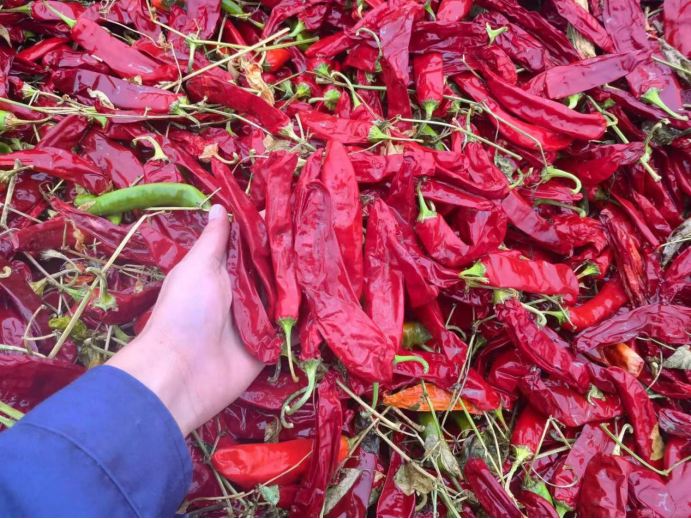- No. 268 Xianghe Street, Economic Development Zone of Xingtai city, Hebei 054001 China
- Byron@hbhongri.cn
Organic Smoked Paprika Spice for Flavorful Cooking and Gourmet Dishes
The Allure of Organic Smoked Paprika A Flavorful Journey
Paprika, a vibrant and versatile spice, brings a dash of color and depth to our culinary creations. Among its various forms, organic smoked paprika stands out as a beloved ingredient that tantalizes the palate and elevates dishes with its rich, smoky essence. This article delves into the origins, production, culinary uses, and health benefits of organic smoked paprika, highlighting why it has earned a special place in kitchens around the world.
Origins and Production
Paprika is derived from the Capsicum annuum plant, which is cultivated in various regions, including Hungary, Spain, and California. The origin of smoked paprika can be traced back to Spain, where traditional methods of drying and smoking peppers over oak wood have been perfected for centuries. The peppers are harvested in their prime, dried using a gentle smoking process that infuses them with a unique depth of flavor.
Organic smoked paprika sets itself apart by adhering to organic farming practices, which eschew synthetic pesticides and fertilizers. This method not only promotes sustainability but also enhances the natural flavors of the peppers. Producers who embrace organic practices prioritize soil health, biodiversity, and eco-friendly approaches, resulting in a spice that is both delicious and ethically sourced.
Flavor Profile and Uses
One of the most captivating aspects of organic smoked paprika is its complex flavor profile. It combines sweetness, earthiness, and smokiness, making it incredibly versatile in cooking. Depending on the specific variety and the region from which it hails, smoked paprika can range from mild to hot, catering to a wide array of tastes.
This spice is a quintessential component of Spanish and Hungarian cuisines, where it plays a key role in signature dishes such as paella, goulash, and chorizo. However, its adaptability extends well beyond these traditional recipes. Chefs and home cooks alike are discovering the myriad ways smoked paprika can enhance contemporary dishes. From adding depth to roasted vegetables and stews to seasoning meats and seafood, it brings warmth and a smoky undertone that elevates the overall flavor profile.
organic paprika smoked

In addition to savory applications, organic smoked paprika can also be utilized in creating unique spice blends and marinades. Its captivating flavor makes it an excellent choice for seasoning oils, dressings, and rubs, allowing for a creative twist on various cuisines.
Health Benefits
In addition to its culinary appeal, organic smoked paprika boasts an array of health benefits. Paprika is rich in vitamins A and E, both of which are powerful antioxidants that contribute to overall health. Vitamin A is essential for maintaining good vision, skin health, and immune function, while vitamin E supports skin health and protects against oxidative stress.
Moreover, smoked paprika contains capsaicin, the compound responsible for the heat in peppers, although it is much milder in smoked paprika. Capsaicin has been linked to numerous health benefits, including improved metabolism and anti-inflammatory properties. Incorporating smoked paprika into your diet may aid in digestion, support cardiovascular health, and provide essential nutrients.
Conclusion
Organic smoked paprika is more than just a spice; it’s a celebration of flavor, culture, and health. With its distinct taste and versatile applications, it has become a staple in kitchens around the world. Whether you’re a seasoned chef or a casual home cook, experimenting with organic smoked paprika can transform your meals, bringing depth and richness that few other spices can match.
Moreover, by choosing organic smoked paprika, you are not only enhancing your culinary creations but also supporting sustainable agricultural practices. As we continue to explore the world of flavors, organic smoked paprika will undoubtedly remain a cherished ingredient, inspiring creativity and delighting taste buds for generations to come.
So the next time you reach for the spice rack, consider adding organic smoked paprika to your culinary arsenal—it may just become your new favorite ingredient!
-
Turmeric Rhizome Powder: A Golden Treasure from Roots to TableNewsJul.28,2025
-
The Versatile Application Of Crushed Red Hot Peppers: Lighting Up The Red Flames On The Dining TableNewsJul.28,2025
-
The Paprika: A Touch Of Vibrant Red In Color, Flavor, And CultureNewsJul.28,2025
-
Ground Turmeric: A Modern Examination of an Ancient SpiceNewsJul.28,2025
-
Capsicum Liquid Extract: Features, Applications, and ChallengesNewsJul.28,2025
-
Application of Capsicum Liquid Extract in FoodNewsJul.28,2025







